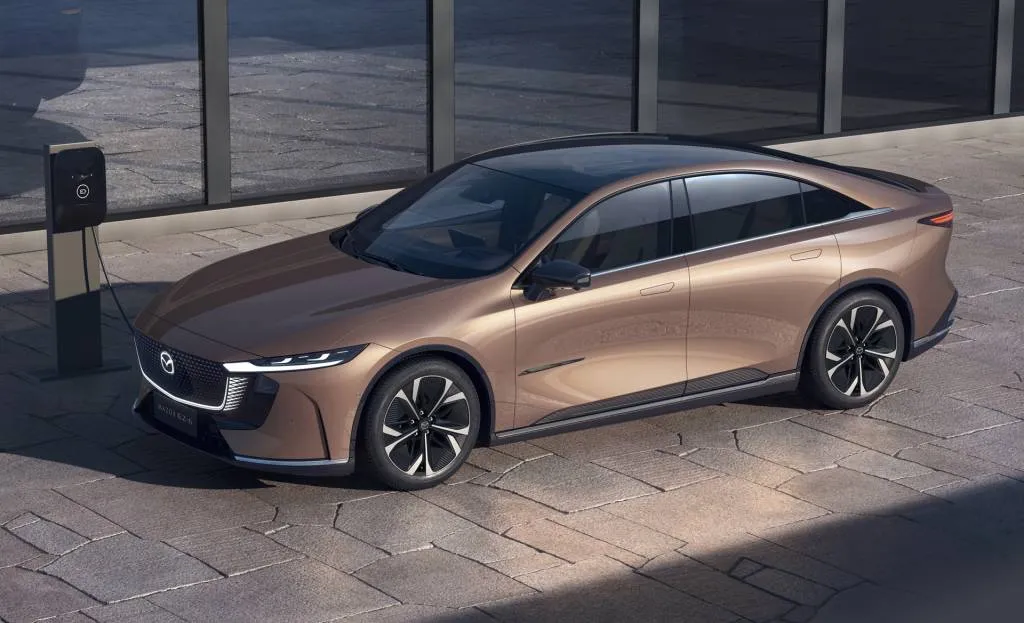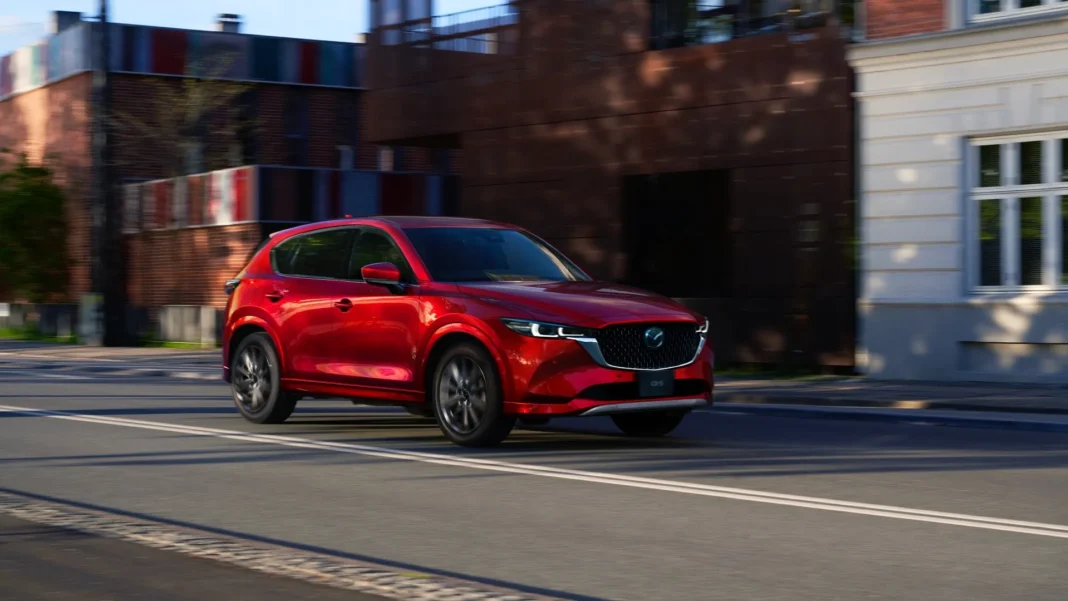Mazda on Thursday provided an update on its powertrain development efforts, which will emphasize bringing more development work on all-electric and hybrid powertrains in-house going forward.
After launching the low-range MX-30 crossover, which has already been discontinued in the U.S., with all-electric and range-extended powertrains, Mazda has leaned on partners for electrification. A hybrid version of the CX-50 crossover SUV arrives for the 2025 model year with a Toyota-sourced hybrid system, while the EZ-6 electric sedan was developed in partnership with China’s Changan Automobile.

Mazda electrification plans for current decade
Now Mazda is trying to stand on its own. In Thursday’s presentation, the automaker said it was developing its own hybrid system to be used in the next-generation CX-5 crossover SUV launching sometime between 2025 and 2027. After the CX-5, the hybrid system could then be applied to larger models, Mazda said.
Closer to the end of that time frame, around 2027, Mazda also plans to launch an electric SUV based on its own dedicated EV platform, with a plug-in hybrid variant also possible. This will be sold alongside an electric SUV co-developed with Changan.

2025 Mazda EZ-6
Mazda also confirmed that it had inked battery supply deals with AESC and Panasonic to secure needed battery volumes up to 2030. A new factory in Japan’s Yamaguchi Prefecture will assemble cells from Panasonic, with which Mazda has been in talks since at least 2023, into modules.
Development of internal-combustion engines will continue as well. In the same presentation, Mazda announced a new Skyactiv-Z family of 4-cylinder engines due to launch in 2027, and said that it reinstated a rotary-engine development team in February. The MX-30 currently uses a small rotary engine as a range extender, but this hints at broader use of the piston-less engines that are a big part of Mazda lore. The automaker in May also allied with Subaru and Toyota to find ways to further reduce emissions from combustion engines.

